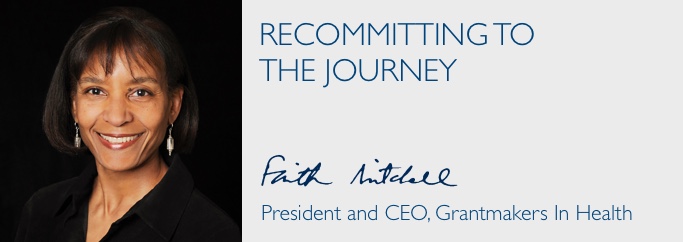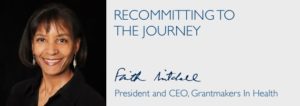
A few weeks ago, I was the moderator for a conversation about “Building, Protecting, and Promoting Evidence to Achieve Health Equity,” between Rich Besser of the Robert Wood Johnson Foundation (RWJF), and Bob Ross of The California Endowment (Endowment). The foundations share a commitment to health equity, but their approaches to achieving it vary in interesting ways. The California Endowment’s flagship health equity initiative is Building Healthy Communities, a major, long-term program that works directly with 14 communities throughout the state with a focus on shaping the social determinants of health. Robert Wood Johnson Foundation has made a similar, sustained investment in the Culture of Health, a national program for improving health, equity, and well-being. These foundations are big players, whose resources few other funders can match, but what they are learning from their grantmaking is relevant for foundations of any size that are interested in health equity, data, and related issues.
One of the topics we talked about was the challenge of communicating evidence in an increasingly politicized environment. RWJF supports the role of philanthropy as an important neutral voice. Consequently, some of its grants are designed to produce data that can break through partisan arguments and lead to productive debates. The Endowment supports a different approach to evidence, namely changing the way communities talk about and address problems. Consequently, some of its grants are for engaging the local media, influential local messengers, and local leaders in the creation of new narratives about community health and prevention, especially in low-income communities.
The takeaway here is that evidence comes in many forms. As research data, it shapes our understanding of issues and is a dependable baseline for the work of policymakers. As the authentic voice of communities, it stirs hearts and can be a powerful driver of change. Which route(s) a foundation takes depends on what it wants to accomplish. But there is no question that philanthropy has a critically important role to play in making sure that reliable evidence in some form is available when decisions are being made that affect communities.
We also talked about achieving health equity. Like RWJF and the Endowment, an increasing number of health foundations are embracing equity goals, and some now define themselves as health equity funders. RWJF and the Endowment use a similar definition of equity as an equal opportunity for all people to be as healthy as possible. However, the field as a whole still lacks a common definition of equity and agreement on what achieving it involves. It is also the case that some foundations consider equity itself to be a controversial concept.
Health philanthropy has work to do in order to define the goals of health equity grantmaking, acknowledge and address areas of controversy, and identify pathways for achieving equitable outcomes. In this regard, GIH is proud to be contributing on several fronts, through our publications, webinars, and meetings. We recognize that achieving health equity requires a sustained commitment on the part of funders and a willingness to tackle longstanding policies and practices. We know that this work is not easy. This June’s annual conference will give health equity funders from across the country an opportunity to compare experiences, share advice, and recommit to the journey ahead.

